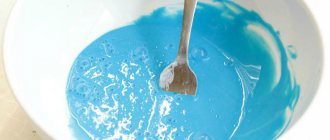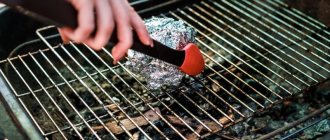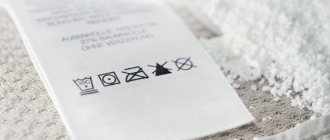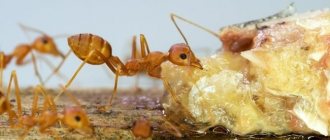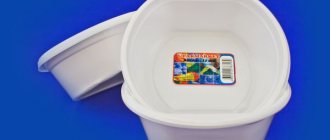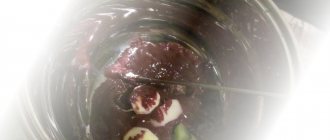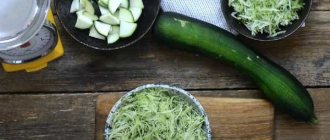Most of us like to start our day with a cup of coffee or tea. These drinks are traditional in many countries. It is impossible to imagine the life of a modern person without them. Tea and coffee are dark-colored drinks that have a coloring effect.
It's nice to take your favorite cup and pour a fragrant drink into it. However, her mood in the morning can ruin her appearance: indelible stains from tea or coffee give her a repulsive appearance. The dishes become untidy. It not only irritates, but also causes a feeling of shame if you have guests and you want to treat them to tea. Of course, any housewife worries about being considered dirty. Therefore, many, especially young housewives, see the only way to solve the problem - to throw away the cups that spoil their reputation.
Is it possible to cope with the tea stain that spoils the appearance of our cups? There are many remedies to solve this problem that you probably have in your kitchen. They will help get rid of disgusting stains from tea or coffee. We invite you to get acquainted with several ways that will allow you to return your dishes to their original cleanliness.
Baking soda and water
Sodium bicarbonate is a long-standing and reliable assistant for housewives. This white powder easily removes tea or coffee stains. Alkali eats away stains, weakening their intensity. But this is not enough to completely remove plaque. It will take a little effort to get rid of it, and the abrasive properties of baking soda will serve you well in this job.
To prepare a cleaning solution for 1-2 cups, you will need a spoon of baking soda and water, as well as a napkin or towel. Place baking soda in a cup and add enough water to form a paste. Treat the inner and outer surfaces of the cup with this mixture and leave it in this condition for 5-10 minutes. Using a cloth or sponge, clean the cup with the paste, then rinse thoroughly with plenty of running water and wipe dry with a towel.
Using the dishwasher
To wash a mug, you just need to place it in the PMM and add detergent (in the form of tablets, liquid, powder) - what could be simpler! However, porcelain cups will have to be washed by hand. Of course, theoretically, they can be loaded into the machine, but these dishes are highly fragile and do not like sudden changes in temperature and the aggressive effects of cleaning agents. Washing it in a car can harm it.
You won’t be able to clean the tea strainer in the PMM either; you will have to do it manually. Difficulties also arise with the teapot: the machine will not be able to thoroughly clean the narrow spout from tea deposits; in hard-to-reach places, it is poorly cleaned or does not wipe off at all automatically.
Melamine sponge
These magic erasers, which appeared on sale relatively recently, do an excellent job of cleaning dishes. They are made from melamine foam and only require water for them to show off their wonderful properties. Judging by the reviews, they cope with stubborn and difficult stains (crayons and ink, scuff marks). Although flexible and soft to the touch, this foam acts like the finest sandpaper and can remove tough and stubborn coffee and tea stains.
Why French children behave well: eight ways to raise them
A student at the Vietnam Police Academy shared how she takes care of her facial skin.
Rare shot: Viktoria Isakova showed her grown-up daughter from Yuri Moroz (new photo)
Pour water into a container convenient for you and dip a sponge into it. Squeeze out excess liquid and wipe away any existing stains. All that remains is to rinse the cup and wipe dry with a dish towel.
Lemon juice or citric acid
Lemon juice and acid dissolve the sediment and prevent its formation. This is why this situation is less problematic if you drink tea with lemon. Then there is no tea residue, or at least less and easier to remove. However, not everyone prefers lemon to tea, and they don’t completely drink coffee with it.
In addition, acid or lemon juice can be successfully used to remove deposits from dishes. Minor stains should disappear without cleaning. It is enough to pour strongly acidified and hot water into the vessel for a few minutes.
Then simply wash and rinse the cups as usual. Older deposits may need to be treated with the sharper side of a scouring sponge, but we'll also do this effortlessly.
Salt
Regular table salt will help get rid of plaque: rub the surface of the cup with it. However, microcracks from salt particles may appear on the ceramic surface. As a result, such damage will only speed up the staining process. Therefore, you should use only finely ground salt or prepare a concentrated solution. For 0.5 liters of water you will need a teaspoon of salt.
Safe cleaning products
Acetic acid is not the best way to combat plaque, since the smell of vinegar is quite pungent.
Put rubber gloves on your hands. Apply acetic acid to the sponge and try to scrub off the plaque. Then wash the cup with your usual cleanser.
To clean the metal lid of a thermos or a French press filter from plaque, you need to pour warm water into it, add 5-10 ml of acetic acid and leave overnight. In the morning, clean the dirt with a sponge and wash the container with dish soap.
The method is not suitable for cleaning plastic dishes: acetic acid spoils them.
Using salt and vinegar
Another very effective mixture that will help get rid of difficult and old stains. Removing tea and coffee stains is one of the many uses of vinegar, which is moderately acidic. Thanks to it, vinegar dissolves the pigments that make up the stain.
Women's jeans: before you buy them, you need to pay attention to one detail
"Dad is offended." Agata Muceniece about her relationship with Priluchny after the divorce
Smooth and fresh skin: dermaplaning, or why a woman needs to shave her face
Salt helps in this reaction, which gives the composition abrasive properties. You will need two tablespoons each of vinegar and salt. Wash the cup with a sponge to remove surface stains.
Make a paste of salt and vinegar and apply it to the surface of the cup. Leave it on for about 10 minutes. Then wipe it with the hard side of the sponge to remove all stains. Then rinse it under running water and wipe dry.
How to clean antiques and gold-plated porcelain?
It is advisable to wash antique and gold-plated dishes in cool water - a compact plastic basin is best suited for these purposes. You cannot hold objects suspended under running water - a fragile item may slip out. Fine handles and subtle decorative elements are often found on antique items. They should be held by the body and secured with the second hand from below. Elegant figures and figurines are wiped with a dry soft cloth or a special brush.
Toothpaste
A very original method, although today toothpaste is often used for other purposes. Regular whitening toothpaste is effective for more than just making your teeth dazzlingly white. Many housewives successfully use it to remove traces of their favorite drinks from mugs and cups. Toothpaste contains mild abrasives: dehydrated silica gels, calcium carbonate, phosphate salts, magnesium carbonates and silicates that remove surface stains. The mechanism for removing them is very similar to what happens when you brush your teeth every day.
The money tree pleases with lush flowering: my secret is in caring for the leaves
It’s good to wash often: myths about shampoo and hair care that only harm
Lost weight: what Sofia Tarasova sacrificed for the sake of “VIA Gra” (new photos)
You will need: white paste, toothbrush, napkin. Apply the paste to the dirty surface using a toothbrush. Be especially careful on the bottom curves of the mug. Let the paste dissolve the plaque for 10 minutes. Then wipe it with a napkin. After this, rinse off the composition and wipe the cup dry with a towel.
The influence of the chemical composition of tea on film
Tea leaf extract is a complex chemical compound. The composition includes catechins, theaflavins, thearubigins, caffeine alkaloids, proteins, mineral salts and other substances. Many of them, when interacting with air, form a mixture of oxidation products and polycondensates, and become tarred, forming a film. The finished tea contains caffeine in two states: combined with tannin and in free form. Its combination with tannin (caffeine tannate) is responsible for the formation of the film.
You may be interested in: Tea with orange: recipes for a fragrant drink
It is believed that black tea reaches its maximum caffeine content after just five minutes. Therefore, longer brewing is not recommended. Research has shown that the resulting layer contains catechin derivatives, nitrogenous bases, protein molecules, calcium, iron, and magnesium.
other methods
The described remedies for removing traces of tea or coffee are classic. Quite unusual approaches can also be used. For example, leave kefir or green tea in a cup until the morning. Each housewife chooses the method that is suitable for her. This choice largely depends on what product you currently have on hand, when the contaminated cup was discovered, and how much time you have to correct the problem.
How to remove tea stains
The problem of tea and coffee stains is known to everyone. In some cases, you can deal with it with ordinary dishwashing detergent and an abrasive sponge, but in some cases you have to resort to using strong household chemicals.
Even dishwasher owners are indignant, because the dishwasher does not wash away these unpleasant marks.
On the shelves of modern supermarkets there are a wide variety of cleaning products, which in most cases take a significant toll on your wallet. That is why, first of all, we recommend considering traditional methods, such as:
- How to choose a thermos so as not to get poisoned and throw this item in the trash?
- Soda;
- Salt;
- Lemon or citric acid;
- Vinegar;
- Bleach;
- Kefir;
- Coca-Cola or Fanta.
Below we will describe them in more detail.
Thermos inside
Today thermoses are manufactured:
- From glass;
- Made of stainless steel.
The smooth surface of a glass flask is much easier to clean, so we will talk about the second option.
Important! Black tea deposits indicate the presence of organic deposits on the walls of the vessel, which spoil the taste and smell of food products inside the metal thermos. When choosing a cleaning method, you should proceed from the degree of contamination of the thermos. For example, a small tea deposit can be easily cleaned with one ripe lemon, which can be bought at any supermarket or market.
The procedure for cleaning the thermos is as follows:
- Wash the lemon thoroughly and cut into slices;
- Place citrus pieces on the bottom of the thermos;
- Pour boiling water over;
- Close the thermos and let it brew for about 12 hours;
- Then pour out the contents of the thermos and rinse it thoroughly.
This is interesting: Remove stains and deposits on stainless steel and porcelain: pots, spoons, forks and plates
This method allows you not only to remove plaque, but also to get rid of the unpleasant odor.
If the contamination is more serious, we recommend using the following method:
- One glass of pearl barley is poured into the vessel;
- One tablespoon of baking soda is also added there;
- The contents are filled with boiling water, but do not fill the thermos completely. Half of the total volume of the vessel is enough;
- Next, the thermos needs to be tightly closed with a lid and shaken thoroughly.
Information. Using this method, you should know that pearl barley acts as a kind of hard washcloth, allowing you to quickly remove tea deposits in a thermos. If each of the presented options does not justify itself, we recommend resorting to more serious means - Coca-Cola or Fanta. All you have to do is heat the drink to boiling point and pour it into the vessel. There is no need to tightly close the thermos with a lid; just leave the contents in the thermos overnight. In the morning you need to pour out the liquid and rinse the vessel thoroughly.
- Tea thermos
Using similar methods, you can clean the thermal mug from plaque.
Teapot
Lovers of traditional tea drinking, who are not tempted by the use of disposable tea bags, have repeatedly faced the problem of cleaning the teapot.
In addition to the walls of the teapot, the strainer also suffers, which is no easier to clean.
Next, we will present you with several effective cleaning products:
- Baking soda. This product is very popular in cleaning the most difficult stains and removing stains. However, you should not use it to clean a French press, since small grains can become clogged in the plunger strainer and create even more serious problems;
- Kefir. A rather unusual remedy, however, according to many reviews, it is very effective. It is enough just to fill the dishes with a dairy product for one night and in the morning there will be no trace left of the tea residue;
- Vinegar. A nine percent acetic acid solution should be used. You need to apply a small amount of the product on a sponge and thoroughly clean the inside of the teapot. Do not forget to use protective equipment - gloves, a respirator;
- Lemon. As with a thermos, the teapot can be filled with lemon slices and boiling water. Instead of lemon, you can use lemon juice or citric acid, this will not make the product any less effective.
This is interesting: What to do if stains appear after wallpapering
Cups, mugs and teaspoons
Cups, mugs, teaspoons - they are all exposed to aromatic drinks that leave behind traces of
Let's look at how to get rid of traces of tea on your favorite porcelain below.
- Toothpaste. This method is quite easy to use, and also economical, because you don’t need to go to the store to buy the main component - it is present in every home:
- It is recommended to take an old toothbrush and squeeze a small amount of toothpaste onto it;
- The walls of the cups should be thoroughly rubbed and then rinsed with warm water.
- Linen oxygen-containing bleach:
- Pour boiling water into the dirty cups and add a small amount of bleach;
- Stir and leave for twelve hours;
- After the specified time has passed, wash the dishes thoroughly using a special product.
Attention! This method is intended for especially advanced cases, when even baking soda or citric acid cannot cope with plaque. Salt. Rub the walls of the cups with regular table salt until they are completely clean. The catch is that the product can scratch the walls and contribute to faster plaque formation in the future. The solution may be finely ground salt or saline solution; Household chemicals. There are special products that can cope even with stubborn stains. An example of such a product is PemoLux.
Tips for caring for dishes
To avoid the formation of an unpleasant dark coating on the cups from tea and coffee, it is necessary to properly care for the dishes. There are many ways to give cups their former freshness and cleanliness, from household chemicals to improvised means. It is important to understand that the more old the stains, the harder it is to get rid of them. Experienced housewives recommend:
- wash the cup immediately after drinking tea;
- It is better to use citric acid, soda and salt in the form of solutions to avoid the appearance of microdamages on the surface of the dishes;
- a cloth napkin is not effective in removing stains: it is more advisable to use a regular or melamine sponge;
- Sometimes poor quality water causes dirty dishes, so wipe them dry.
Found a violation? Report content
Causes
The leaves contain tannins. They give the drink bitterness and provide an astringent effect. Because of them, a cloudy film forms on the surface of the drink. It is not always visible, but over time it appears on the dishes.
When we drink, the mug tilts, a film settles on the cup and dries, becoming darker and thicker. This is the reason for traces that are difficult to wash off.
Coca Cola
Coca-Cola and similar drinks contain phosphoric acid, which can remove any type of plaque from many surfaces in a short time.
If the stains are light: pour Coca-Cola into the kettle and leave for several hours. Then drain and evaluate the result. The procedure can be repeated if necessary.
If there is a strong coating: heat the Coca-Cola without boiling and pour it into the kettle. Then proceed as in the first point.
After clearing the kettle of deposits, rinse it with water and set it to dry.
Why does the teapot need regular cleaning?
Even after a short period of use, you can notice that the strainer inside the teapot becomes clogged and acquires a brown tint. This occurs due to the coloring pigment contained in tea - tannin. Even if you thoroughly rinse the dishes after each brewing of tea, the problem of plaque will not disappear. If there is no cleaning, the teapot strainer will gradually stop letting tea through, and specks will begin to enter the aromatic drink, clogging the holes.
You can avoid the need to combat plaque by using tea in disposable bags. But such a drink will turn out less aromatic and tasty. And the benefits of it are very doubtful. This is due to the technology for creating such teas. They usually do not contain carefully selected, high-quality and whole tea leaves, but industrial waste.
